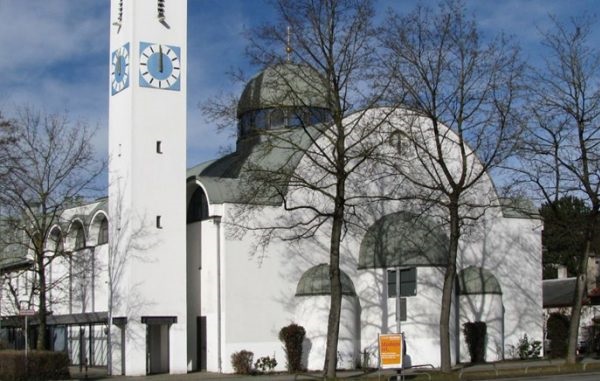Christianity in the Contemporary World: In Search of New Perspectives of a Dialogue of Religions
9 July 20181.
At the turn of the 19th century, German poet and mystical philosopher Novalis wrote his famous essay Christendom or Europe. Already the title of it was stating clearly the identity of the two historical phenomena; and though Novalis described the process through which Europe was gradually losing “the beautiful chief characteristics of these truly Christian times,” he was convinced that the original identity could not be lost. Europe and the Western World, could be Christianity, better or worse, but they could not be anything else at their core, since there is not (and there cannot be) another ultimate meaning of their historical existence. “Ultimate meaning cannot be annihilated, it can be just clouded, weakened, superseded by other meanings.”[1] And we can assume that, with some limitations, this position was then shared by most of enlightened Europeans; it was a voice of European self-consciousness.
Two centuries later, at the turn of the 21st, European self-consciousness expressed a polar opposite position: after fundamental discussions, a very representative forum consisting of participants from all the countries of the continent, refused to include any reference – not only about ultimate meaning, but also about virtual Christian ancestry of European culture – into The European Union’s Constitution. In a sense, that refusal is a symbolic event marking the apex of secularization, a break with Christian consciousness when the “gathered powers,” essentially, agreed to replace Novalis’ expression with the opposite: Postchristianity or Europe.

This striking shift is a fruit of the history of the 20th century which was ultimately dramatic for Christianity. A variety of factors led to the intensification and acceleration of social secularization, as well as the start of the post-Christian phase in countries of Christendom.
The experience of world wars and totalitarianism showed the fragility of, and in some measure, the ostensibility of, Christian principles of conscience and society; it revealed a deep crisis of Christian ethics that could not interdict Christian peoples – neither in Orthodox Christian Russia, nor in Lutheran Germany – from mass support for inhuman totalitarian regimes.
Then came an explosive development of technological civilization that was accepted by mass consciousness as ‘the highest stage of development,’ which made the religious form of consciousness obsolete, inadequate to the new reality as well as to new possibilities for man and his mind. Finally, the advent of globalization brought an intense mixing of ethnicities and cultures, as well as of communities with different religions, and entailed an ultimate dilution of traditional order and replacement of monoreligious societies. Hardly anywhere now, do Christian communities form monolithic “Christian societies,’ instead they find themselves in an extremely heterogeneous medium, closely neighboring with representatives of other religions, and people with secular, non-religious consciousness. Now, at this stage, the idea that the contemporary West is ‘postchristianity’ has acquired popularity. This notion has never been clearly defined, being generally used in accordance with its literal meaning: as a denotation of a new formation of society and consciousness, for which Christianity is irremeably, irreversibly in the past. But it is important to note that the concept of postchristianity had not yet fully formed and reached universal dominance, when another concept, another perspective on the contemporary situation started to force it out and supersede it.
This new idea which is acquiring more and more influence nowadays is that of postsecularism, first suggested by Jьrgen Habermas in the aftermath of the terrorist attack of 9/11 (though the term itself had emerged before without becoming a full-fledged concept). The idea affirms that nowadays secular (extra- or non-religious) and religious consciousness form a new type of interrelationships, quintessentially different from their relationships in the epoch of secularization. The determining trait of this type of relationship is its rejection of secularization’s leading strategy, which was directed toward the displacement and elimination of religion from social and culture life, and supposed that such elimination would become total or nearly total in the near future. (Hence we can see that the idea of postchristianity can be considered a kind of flash-forward to a time when complete secularization is believed to be an accomplished fact.)
Two basic suggestions supersede this strategy. First, religious consciousness is not admitted as a backward and obsolescent formation – a kind of ‘vanishing scenery’ – but as an everlasting, immanent factor of human existence. Second, and equally important, it is assumed that secular consciousness and religious consciousness should be neither isolated from each other nor in confrontation with each other, but that they should develop an active contact and mutually tolerant communication, and build a dialogue targeted at mutual understanding.
At the moment these ideas are being actively discussed. They generally find support in both secular and religious circles. A meeting and discussion between Jьrgen Habermas and Cardinal Joseph Ratzinger (now Pope Benedict XVI) held in Munich on January 19th 2004 can be considered as the specific starting point, a symbolic meeting of two sides of the postsecular dialogue. Old confrontation attitudes certainly do not disappear easily. Radical secularization was part and parcel of Western liberalism’s positions for a long time, while the condemnation of non-religious consciousness, as well as an uncompromising attitude to it were a necessary feature of orthodoxal religious (but not only fundamentalistic) views. As current events in Russia and the whole Christendom brightly demonstrate, conflicts between adherents of those opposite views still take place at all levels, and are still a characteristic trait of modern life. However, the weight of evidence suggests that the foundation for a transition to a postsecular formation has been laid. Its development is gradually becoming one of leading trends in social and anthropological reality.







